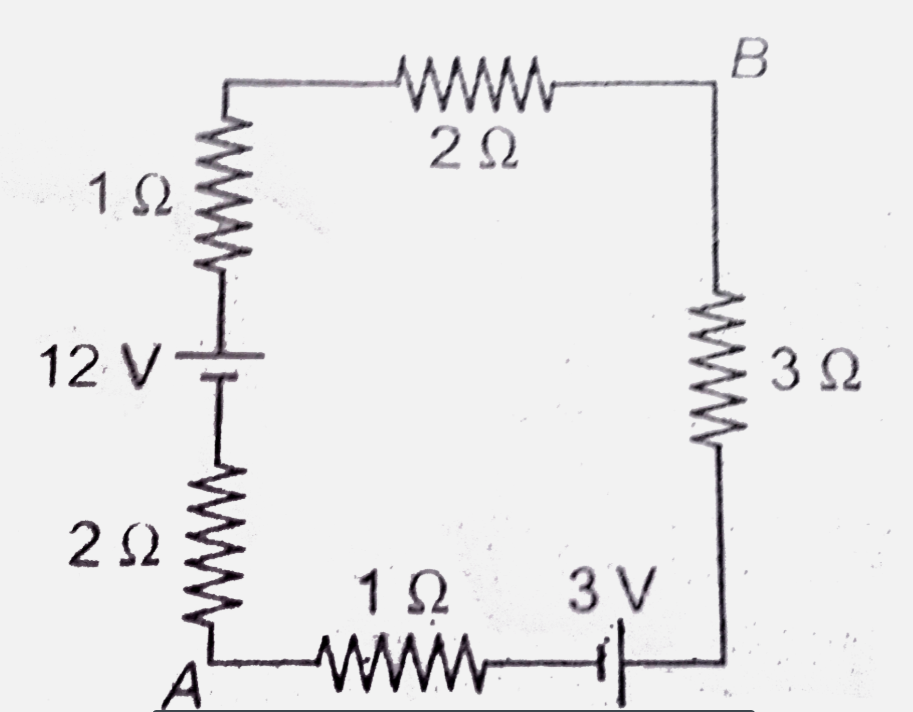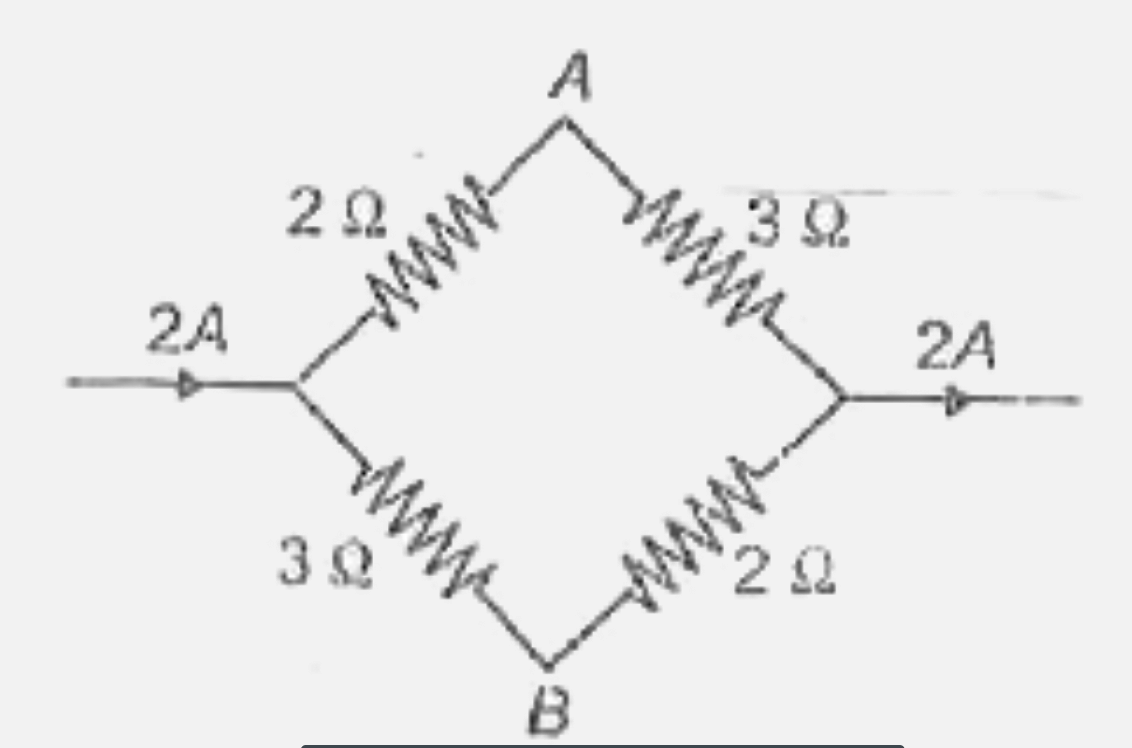Assume that an electric field →E=30x2ˆj exists in space. Then the potential difference VA−VO, where VO is the potential at the origin and VA the potential at x=2m is:
The correct Answer is:80
As we know, potential difference VA−VO is
dV=−Edx
∫vAv0dV=−∫2030x2dx
VA−VO=−30×[x33]20
=−10×[23−(0)3]
−10×8=−80J
Topper's Solved these Questions
Similar Questions
Knowledge Check
Assume that an electric field →E=30x2ˆi exists in space. Then the potentail differences VA−V0 where V0 is the potential at the origin and VA, the potebntail at x=2m is
A−80VB80VC120VD−120V
An electric field →E=Bxˆi exists in space, where B=20V/m2. Taking the potential at (2m, 4m) to be zero, find the potential at the origin.
View SolutionAn electric field →E=(25ˆi+30ˆj)NC−1 exists in a region of space.If the potential at the origin is taken to be zero then the potential at x=2 m y=2 m is :?
View SolutionPotential difference VB−VA in the network shown is

View SolutionAn electric field →E=→IAx exists in the space, where A=10Vm−2. Take the potential at (10m, 20m ) to be zero. Find the potential at the origin.
View SolutionAn electric field →E=ˆiCx exists in the space, where C = 10 V/m2 . Taking the potential at (10 m, 20 m ) to be zero, find the potential at the origin.
View SolutionAn electric field →E=(25ˆi+30ˆj)NC−1 exists in a region of space.If the potential at the origin is taken to be zero then the potential at x=2m y=2m is : (A) -110V (B) -140V (D) -120V -130V
View SolutionA uniform electric field of 30NC−1 exists along the X-axis calculate the potential difference VB−VA between the points A (4m,2m) and B(10m,5m).
View Solution

